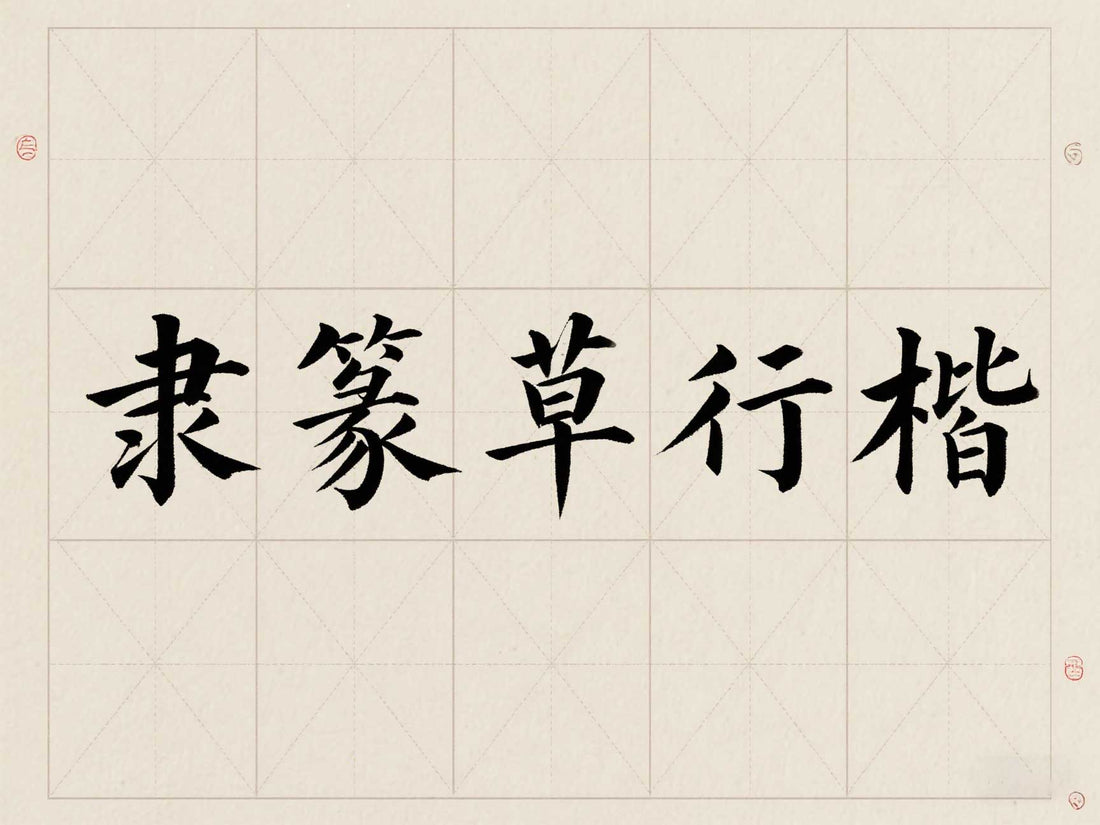
What fonts should beginners choose to get started?
Share
1. Classification of calligraphy fonts
Chinese calligraphy can be divided into five main categories:
- Seal Script : It includes large seal script (oracle bone script, bronze script, stone drum script, etc.) and small seal script, and is characterized by rounded lines and symmetrical structure.
- Lishu : Originated from the simplified seal script, with flat characters and straight strokes, emphasizing the brushwork features of "silkworm head and goose tail".
- Regular Script : It is divided into Weibei and Tang Kai, with neat and rigorous structure and distinct strokes. It is the basis of daily writing.
- Running Script : It is between regular script and cursive script, combining fluency and practicality.
- Cursive script : includes regular cursive script, modern cursive script and wild cursive script, which are characterized by simplification and connected strokes. The writing is free but relatively difficult.
2. Tips for beginners
Selection basis
-
Seal Script
- Advantages: It helps to master the use of center pen and line control, the characters have strong symmetry and regularity, and it is suitable for cultivating pen control ability.
- Recommended for: learners who value basic skills and pursue the roots of calligraphy.
-
Lishu
- Advantages : The brushwork is rich in variations (such as lifting, pressing, and pausing), the structure is clear, and it is both artistic and practical, and can serve as a transition between seal script and regular script.
Recommended for : learners who want to quickly create beautiful fonts and understand the laws of calligraphy evolution.
-
Regular Script
- Advantages : The structure is standardized and clear, suitable for establishing character recognition, and is the mainstream choice for traditional teaching.
- Recommended for : Beginners who are looking for practical handwriting or systematic learning of standard fonts.
-
Running Script and Cursive Script
- Running Script : requires a certain foundation in regular script, suitable for daily quick writing;
- Cursive script : It has a high degree of freedom but a complex structure, so it is not recommended for beginners.
3. Comprehensive Suggestions
-
Preferred :
- Seal script (such as small seal script) : Practice line stability and structural symmetry through classic copybooks such as "Yishan Inscription".
- Official script (such as Cao Quan Stele ): Learn the rhythmic sense of “one wave and three strokes” and cultivate the ability to change the brushwork.
-
Second option :
- Regular script (such as Yan Zhenqing's "Duobao Pagoda Stele") : suitable for learners who need to take practicality into consideration.
-
Learning Path :
- Seal/Li → Regular → Running → Cursive, gradually master the evolution of calligraphy brushwork and expression forms.
4. Tools and Practice Methods
Recommended copybooks : For seal script, choose works by Deng Shiru or Li Si, for clerical script, choose "Ying Tablet", for regular script, choose Ouyang Xun or Yan Zhenqing.
Pen control training : In the initial stage, improve the control of the brush by drawing straight lines and curves, and then combine copying to deepen understanding.
By clarifying your goals (artistic creation or practical calligraphy), choosing the appropriate entry direction, and combining it with systematic practice, you can effectively improve your calligraphy skills.
